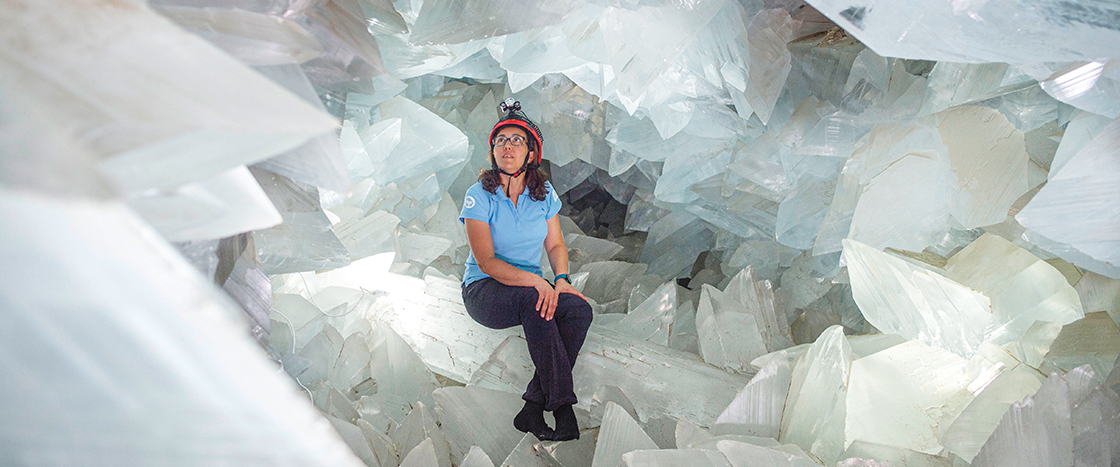Jim McMahon
From the outside, geodes look like regular round rocks. If you crack one open though, you’ll find its walls are lined with sparkling crystals. Many geodes are small enough to fit in your hand. But in southern Spain near the city of Pulpí, you can find a geode that’s 8 meters (26 feet) long!
Known as the Pulpí Geode, it’s one of the largest crystal-filled rocks ever discovered. And it recently opened to the public! To see it, visitors must trek 50 meters (164 feet) underground through the tunnels of an abandoned mine and squeeze through the geode’s 1 meter (3 foot) wide opening.
The experience is otherworldly, says Javier García Guinea. He’s a geologist at the National Museum of Natural Sciences in Madrid, Spain, who has studied the geode.
They may look like regular rocks on the outside. But crack a geode open. Inside, its walls are lined with sparkling crystals. Many geodes could fit in your hand. But there’s a geode in southern Spain near the city of Pulpí that is 8 meters (26 feet) long!
The Pulpí Geode is one of the largest ever found. And it recently opened to the public! Visitors must trek 50 meters (164 feet) underground to see it. They walk through the tunnels of an old mine. Then they squeeze through the geode’s 1 meter (3 foot)-wide opening.
The experience is amazing, says Javier García Guinea. He’s a geologist. He’s studied the geode. He works at the National Museum of Natural Sciences in Madrid, Spain.

